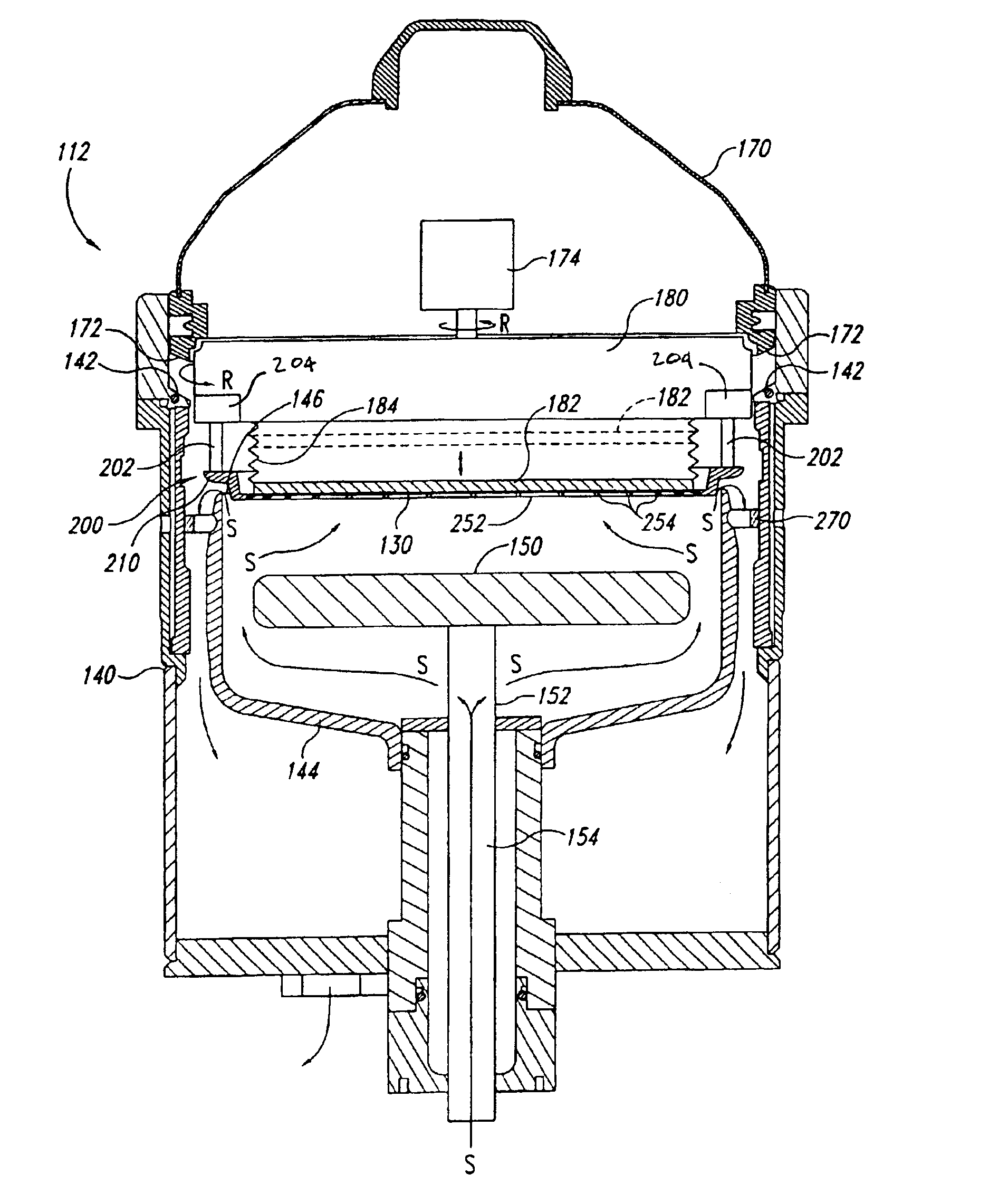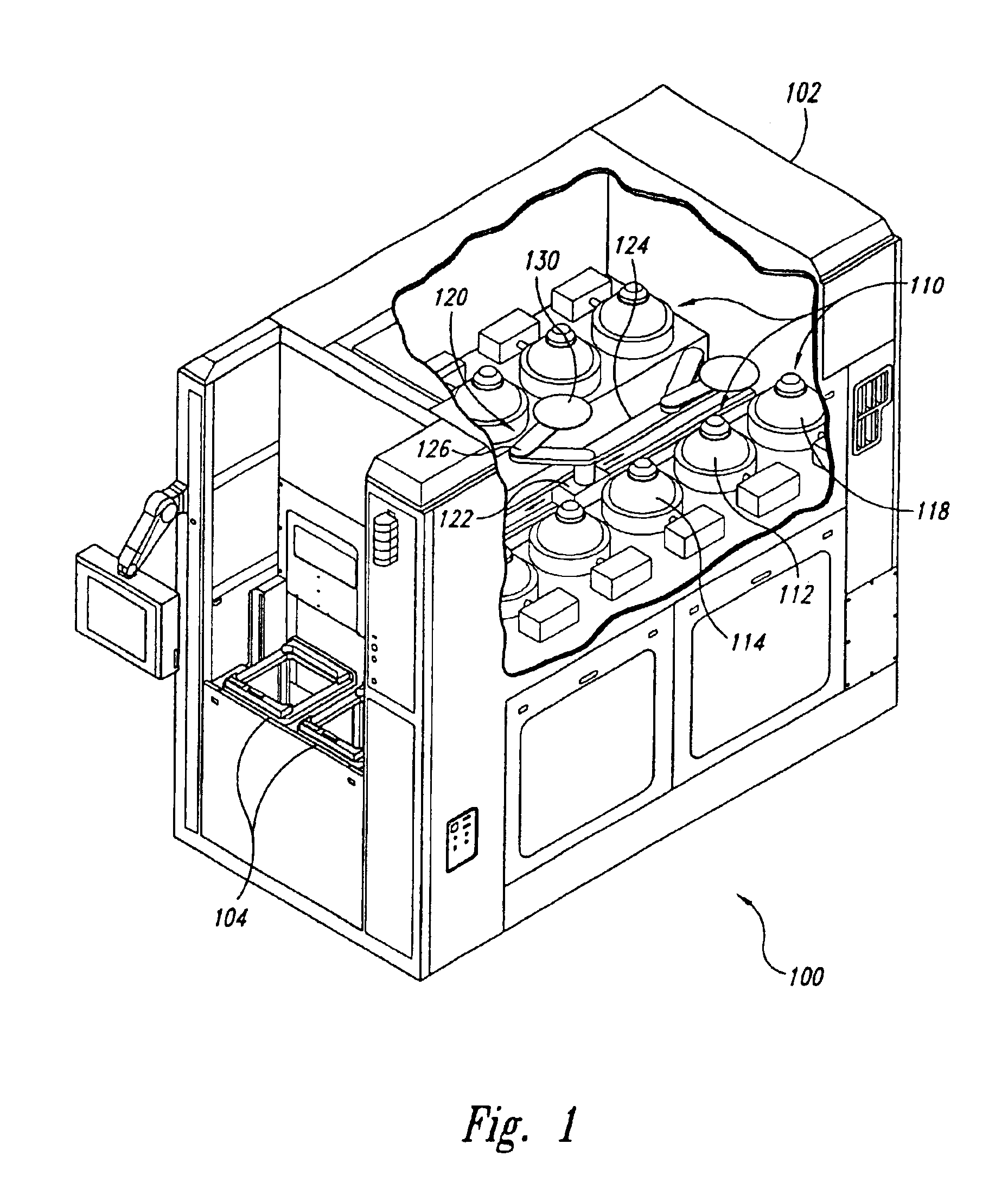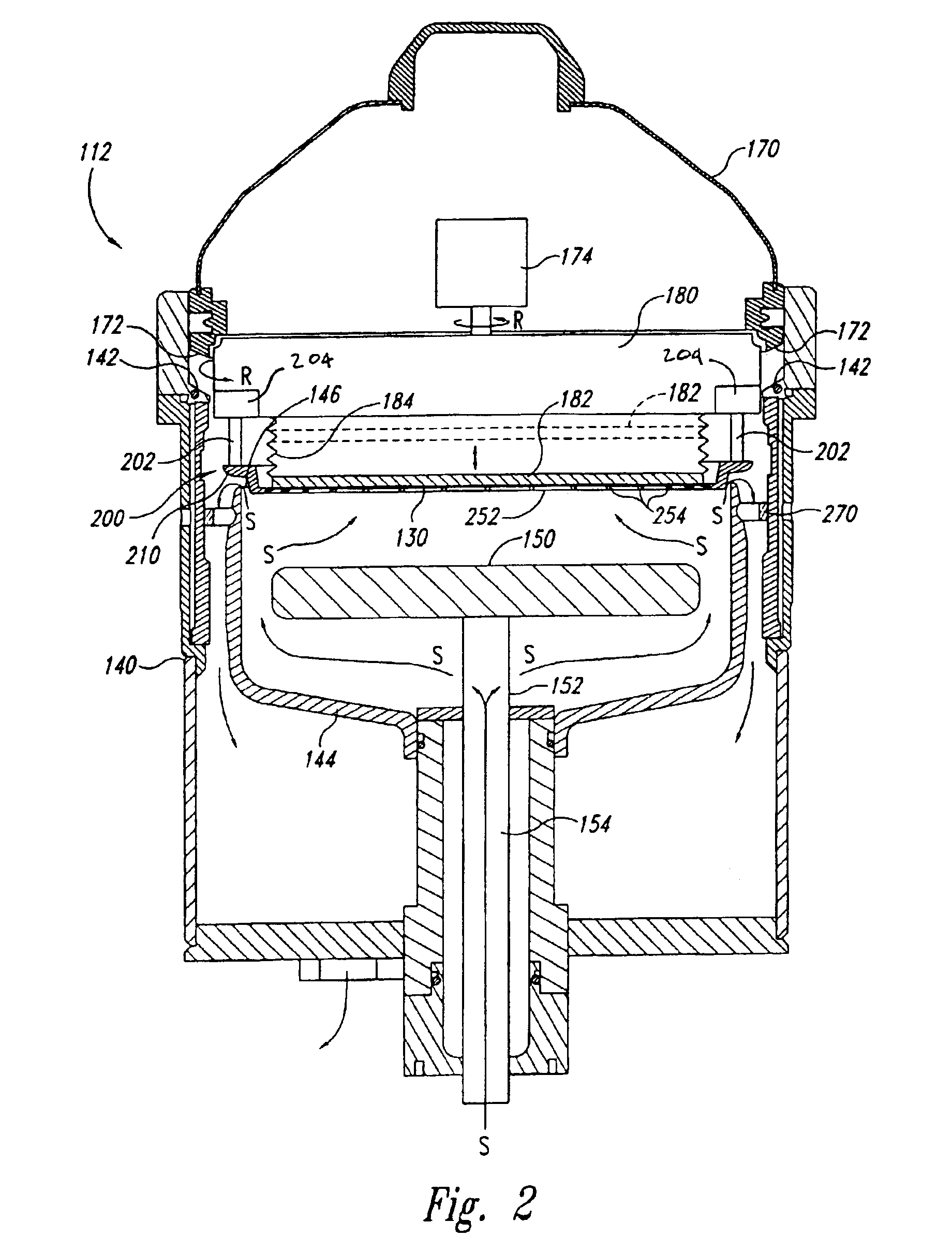Contact assemblies, methods for making contact assemblies, and plating machines with contact assemblies for plating microelectronic workpieces
a technology of contact assemblies and microelectronic workpieces, which is applied in the direction of machining electrodes, electrical-based machining electrodes, manufacturing tools, etc., to achieve the effect of reducing the electrical connection between the contact and the seed layer, and reducing the efficiency of the electrical connection
- Summary
- Abstract
- Description
- Claims
- Application Information
AI Technical Summary
Benefits of technology
Problems solved by technology
Method used
Image
Examples
Embodiment Construction
[0022]The following description discloses the details and features of several embodiments of contact assemblies, methods for making contact assemblies, and electroplating machines with contact assemblies for electroplating metal layers onto microelectronic workpieces. It will be appreciated that several of the details set forth below are provided to describe the foregoing embodiments in a manner sufficient to enable a person skilled in the art to make and use contact assemblies and electroplating systems in accordance with embodiments of the invention. Several of the details and advantages described below, however, may not be necessary to practice embodiments of the invention accordance with the following claims. For example, many of the embodiments described below are directed toward wet-contact assemblies, but these same devices can also be used in dry-contact assemblies as shown in PCT Application No. PCT / US99 / 15847. Additionally, the invention can also include additional embodim...
PUM
| Property | Measurement | Unit |
|---|---|---|
| Angle | aaaaa | aaaaa |
| Radius | aaaaa | aaaaa |
| Electrical conductor | aaaaa | aaaaa |
Abstract
Description
Claims
Application Information
 Login to View More
Login to View More - R&D
- Intellectual Property
- Life Sciences
- Materials
- Tech Scout
- Unparalleled Data Quality
- Higher Quality Content
- 60% Fewer Hallucinations
Browse by: Latest US Patents, China's latest patents, Technical Efficacy Thesaurus, Application Domain, Technology Topic, Popular Technical Reports.
© 2025 PatSnap. All rights reserved.Legal|Privacy policy|Modern Slavery Act Transparency Statement|Sitemap|About US| Contact US: help@patsnap.com



